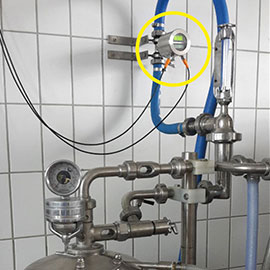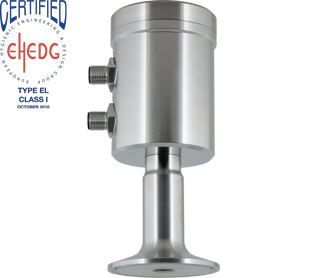Customer
 Mosterei Billing, Holzingen
Mosterei Billing, Holzingen
Application Detail
The Mosterei Billing in Holzingen near Weissenburg is among the largest cider mills in western Central Franconia. The mill specializes in processing fruit from local orchards into natural, high quality juices. This is done using a mobile cider mill and a stationary press on the company premises.
The application
In the application described here, the fruit is pressed and the medium is then processed directly in a centrifuge. In this process, undesirable solids are separated from the medium and the final product is pumped into a storage container.
Because the Mosterei Billing does not use additives of any kind and still aims to offer its customers juices with a consistent appearance, the solid content in the final product and the associated optical turbidity must be as constant as possible.
The requirement
To obtain juices of high quality with a constant turbidity, the medium must be continuously monitored during the centrifugation process. At the Mosterei Billing, this was previously performed manually via the sight glass.
This required the attention of the operator throughout the centrifugation process. Consequently, other processes such as the operation of the fruit press could not be performed in parallel by the same person. Moreover, a certain fluctuation in turbidity could not be reliably ruled out because of the subjective nature of monitoring juice through the sight glass.
The Anderson-Negele solution
Automated turbidity monitoring with the ITM-51 turbidity sensor from Anderson-Negele permits the reliable measurement of the product quality without having to invest the time required for optical checks at the sight glass. When the product reaches a defined turbidity, the sensor sends a signal to the centrifuge control and a solids ejection process is started. Because this automated process frees up the system operator to work on upstream and downstream processes during the separation process, a considerable increase in efficiency can be achieved during production.
Why did the customer choose Anderson-Negele?
In a preliminary test of the fruit juices, the turbidities were measured to determine if they were sufficient for process control by means of a turbidity sensor. The compact size of the sensor and the option of a remote version convinced the customer to automate its turbidity measurement.



Copyright © 2022 Anderson-Negele